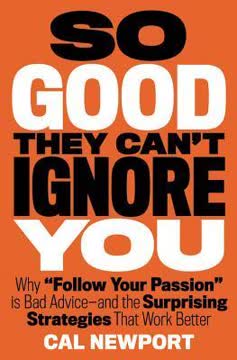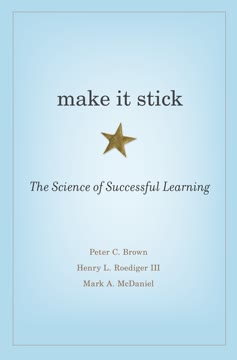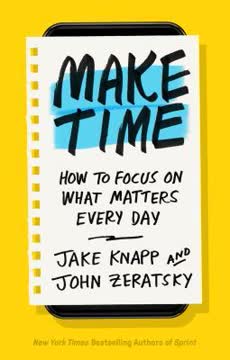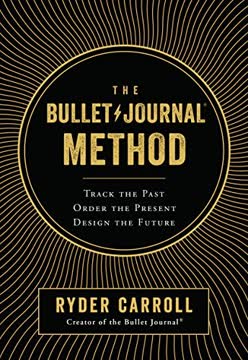النقاط الرئيسية
1. طريقة صندوق الملاحظات: نهج ثوري في تدوين الملاحظات وإدارة المعرفة
"يوفر صندوق الملاحظات الخطوة المفقودة لتحويل العمل على شيء ما إلى عمل فعلي."
نظام صندوق الملاحظات هو طريقة لتدوين الملاحظات وإدارة المعرفة طورها نيكلاس لوهمان، عالم الاجتماع الألماني الغزير الإنتاج. يتكون النظام في جوهره من ثلاثة مكونات رئيسية:
- ملاحظات عابرة: تذكيرات سريعة ومؤقتة للأفكار
- ملاحظات أدبية: ملخصات موجزة لما قرأته
- ملاحظات دائمة: أفكار مصاغة بشكل جيد مرتبطة بمعرفتك الحالية
تكمن قوة هذا النظام في قدرته على إخراج عملية التفكير لدينا إلى الخارج. من خلال إنشاء شبكة من الملاحظات المترابطة، نبني "دماغًا خارجيًا" يساعدنا على تطوير الأفكار، وإقامة الروابط، وتوليد الرؤى مع مرور الوقت. هذا النهج يحول تدوين الملاحظات من نشاط سلبي إلى أداة تفكير نشطة.
الفوائد الرئيسية لطريقة صندوق الملاحظات:
- تقليل العبء المعرفي من خلال تفريغ المعلومات
- تشجيع الانخراط المستمر مع الأفكار
- تسهيل الروابط والرؤى غير المتوقعة
- توفير نهج منظم لتطوير الأفكار المعقدة
2. الكتابة هي التفكير: قوة الدعم الخارجي
"الكتابة هي، بلا شك، أفضل ميسر للتفكير، والقراءة، والتعلم، والفهم، وتوليد الأفكار التي لدينا."
التفكير من خلال الكتابة هو مبدأ أساسي في طريقة صندوق الملاحظات. من خلال إخراج أفكارنا عبر الكتابة، نشارك في حوار مع أنفسنا ومع أفكارنا. هذه العملية تجبرنا على توضيح تفكيرنا، وتحديد الفجوات في فهمنا، وإقامة الروابط التي قد لا تكون واضحة عندما تبقى الأفكار في عقولنا.
فعل كتابة الملاحظات الدائمة لصندوق الملاحظات لا يتعلق فقط بتسجيل المعلومات، بل يتعلق بـ:
- ترجمة الأفكار إلى كلماتنا الخاصة
- ربط المعلومات الجديدة بالمعرفة الحالية
- تحديد الأسئلة والمجالات التي تحتاج إلى استكشاف إضافي
- تطوير الحجج وخطوط التفكير
من خلال اعتبار الكتابة جزءًا لا يتجزأ من عملية التفكير، بدلاً من نشاط منفصل يأتي بعد التفكير، يمكننا تحسين قدرتنا على فهم الأفكار المعقدة وتوليد رؤى أصلية بشكل كبير.
3. من جامع إلى مبدع: تحويل المعلومات إلى معرفة
"صندوق الملاحظات ليس مجموعة من الملاحظات. العمل معه يتعلق أقل باسترجاع ملاحظات محددة وأكثر بتوجيهنا إلى الحقائق ذات الصلة وتوليد الرؤى من خلال السماح للأفكار بالتداخل."
الانخراط النشط مع المعلومات أمر حاسم لتحويلها إلى معرفة. تحول طريقة صندوق الملاحظات نهجنا من الجمع السلبي إلى الإبداع النشط. بدلاً من مجرد تراكم المعلومات، نقوم بمعالجتها، وربطها بمعرفتنا الحالية، واستخدامها لتوليد أفكار جديدة.
تحدث هذه التحويلات من خلال عدة خطوات رئيسية:
- القراءة الانتقائية وتدوين الملاحظات
- إعادة صياغة الأفكار بكلماتنا الخاصة
- ربط الملاحظات الجديدة بالملاحظات الموجودة
- مراجعة وتنقيح شبكة ملاحظاتنا بانتظام
من خلال الانخراط مع المعلومات بهذه الطريقة، ننتقل من مجرد التراكم إلى الفهم الحقيقي والإبداع. يصبح صندوق الملاحظات ليس مجرد نظام تخزين، بل شريك تفكير يساعدنا على تطوير وتنقيح أفكارنا مع مرور الوقت.
4. فن الربط: بناء شبكة من الأفكار
"من خلال إضافة روابط بين الملاحظات، تمكن لوهمان من إضافة نفس الملاحظة إلى سياقات مختلفة."
إنشاء الروابط بين الأفكار هو جوهر طريقة صندوق الملاحظات. من خلال ربط الملاحظات ببعضها البعض، نخلق شبكة من المعرفة تعكس الطبيعة المترابطة للأفكار. تتيح لنا هذه الشبكة:
- اكتشاف علاقات غير متوقعة بين المفاهيم
- رؤية الأفكار من زوايا متعددة
- تطوير فهم أكثر دقة للمواضيع المعقدة
- توليد رؤى جديدة من خلال دمج الأفكار الموجودة
عملية ربط الملاحظات لا تتعلق فقط بتنظيم المعلومات، بل تتعلق بالتفكير النشط حول كيفية ارتباط الأفكار ببعضها البعض. مع إضافة ملاحظات جديدة وإنشاء روابط جديدة، تصبح شبكتنا المعرفية أكثر تعقيدًا وقيمة مع مرور الوقت.
أنواع الروابط الرئيسية في صندوق الملاحظات:
- إشارات مباشرة إلى ملاحظات ذات صلة
- إدخالات فهرس للوصول السهل إلى المواضيع المهمة
- ملاحظات نظرة عامة تلخص مجموعات من الأفكار
- ملاحظات هيكلية تحدد الحجج أو خطوط التفكير
5. المرونة والإبداع: مزايا التفكير من الأسفل إلى الأعلى
"تطوير الحجج والأفكار من الأسفل إلى الأعلى بدلاً من الأعلى إلى الأسفل هو الخطوة الأولى والأهم لفتح أنفسنا للرؤى."
التفكير من الأسفل إلى الأعلى هو ميزة رئيسية في طريقة صندوق الملاحظات. بدلاً من البدء بهيكل أو فرضية محددة مسبقًا، نسمح للأفكار والحجج بالظهور بشكل عضوي من مجموعة ملاحظاتنا. لهذا النهج عدة مزايا:
- الانفتاح على أفكار جديدة وروابط غير متوقعة
- تقليل التحيز والأفكار المسبقة
- مرونة أكبر في تطوير الحجج
- زيادة الإمكانية للرؤى الأصلية
من خلال التركيز على الأفكار الفردية وروابطها، بدلاً من محاولة ملاءمة المعلومات في إطار موجود مسبقًا، يمكننا تطوير تفكير أكثر قوة وإبداعًا. يصبح صندوق الملاحظات أداة للاستكشاف والاكتشاف، بدلاً من مجرد وسيلة لتنظيم المعلومات التي نعرفها بالفعل.
أمثلة على التفكير من الأسفل إلى الأعلى في العمل:
- اكتشاف اتجاه بحث جديد من خلال روابط ملاحظات غير متوقعة
- تطوير حجة جديدة من خلال دمج أفكار من مجالات مختلفة
- تحديد الفجوات في المعرفة الحالية من خلال رؤية ما ينقص في شبكتنا
6. حلقة التغذية الراجعة: كيف يحسن صندوق الملاحظات التعلم والفهم
"يوفر صندوق الملاحظات دعامة خارجية للتفكير ويساعد في تلك المهام التي لا تكون أدمغتنا جيدة فيها، وأهمها التخزين الموضوعي للمعلومات."
التغذية الراجعة المستمرة هي جانب حاسم من طريقة صندوق الملاحظات. بينما نتفاعل مع ملاحظاتنا، نشارك باستمرار في عملية مراجعة وتنقيح وتوسيع. هذا يخلق حلقة تغذية راجعة قوية تعزز تعلمنا وفهمنا مع مرور الوقت.
العناصر الرئيسية في حلقة التغذية الراجعة لصندوق الملاحظات:
- مراجعة منتظمة للملاحظات الموجودة
- تحديث وتنقيح الأفكار بناءً على معلومات جديدة
- تحديد الفجوات في المعرفة والمجالات التي تحتاج إلى استكشاف إضافي
- اختبار فهمنا من خلال محاولة شرح الأفكار بكلماتنا الخاصة
تساعدنا هذه العملية على:
- تعزيز تعلمنا من خلال التكرار المتباعد
- تحديد وتصحيح المفاهيم الخاطئة
- تعميق فهمنا للمواضيع المعقدة
- توليد أسئلة جديدة وخطوط استفسار
من خلال إخراج تفكيرنا وإنشاء نظام للتفاعل المنتظم مع أفكارنا، نخلق أداة قوية للتعلم المستمر والنمو الفكري.
7. من الملاحظات إلى المخطوطات: الانتقال السلس إلى الكتابة
"إذا كنت تكتب، فمن المرجح أن تفهم ما تقرأ – وفقط إذا كنت تفهم ما تقرأ، ستتمكن من جمع الأفكار من خطوط تفكير مختلفة."
الكتابة السلسة تصبح ممكنة عندما نستخدم طريقة صندوق الملاحظات بفعالية. من خلال تطوير وربط أفكارنا باستمرار عبر الملاحظات، نخلق أساسًا غنيًا لمشاريع الكتابة لدينا. عندما يحين وقت كتابة ورقة أو كتاب، لا نبدأ من الصفر، بل نستند إلى شبكة أفكار متطورة جيدًا.
تشمل عملية الانتقال من الملاحظات إلى المخطوطة:
- تحديد مجموعات من الملاحظات ذات الصلة بموضوعنا
- ترتيب هذه الملاحظات في هيكل أولي
- توسيع الأفكار في ملاحظاتنا لإنشاء أقسام مسودة
- تنقيح وربط هذه الأقسام في كيان متماسك
فوائد هذا النهج:
- تقليل عائق الكتابة، حيث لا نواجه أبدًا صفحة فارغة
- حجج أكثر تماسكًا وتطورًا
- دمج أسهل للأفكار والمصادر المتنوعة
- زيادة الإنتاجية، حيث تم إنجاز الكثير من التفكير بالفعل
من خلال اعتبار الكتابة عملية مستمرة للتطوير بدلاً من مهمة منفصلة، يمكننا إنتاج عمل عالي الجودة مع أقل قدر من الضغط والجهد.
8. التغلب على التحيز: كيف يعزز صندوق الملاحظات التفكير النقدي
"يتم التعامل مع تحيز التأكيد هنا في خطوتين: أولاً، من خلال قلب عملية الكتابة بأكملها، وثانيًا، من خلال تغيير الحوافز من العثور على الحقائق المؤكدة إلى جمع أي معلومات ذات صلة بغض النظر عن الحجة التي ستدعمها."
تحدي افتراضاتنا هو فائدة رئيسية من طريقة صندوق الملاحظات. من خلال إخراج أفكارنا وإنشاء شبكة من الأفكار، نخلق فرصًا لمواجهة تحيزاتنا وتوسيع آفاقنا. يعمل صندوق الملاحظات كأداة للتفكير النقدي من خلال:
- تشجيعنا على النظر في وجهات نظر متعددة
- جعل التناقضات وعدم التناسق أكثر وضوحًا
- توفير هيكل لاستجواب افتراضاتنا بشكل منهجي
- تسهيل دمج مصادر وأفكار متنوعة
استراتيجيات لاستخدام صندوق الملاحظات لتعزيز التفكير النقدي:
- البحث بنشاط وتدوين وجهات نظر متعارضة
- مراجعة بانتظام واستجواب الروابط بين ملاحظاتنا
- استخدام صندوق الملاحظات لتحديد الفجوات في معرفتنا أو تفكيرنا
- الانخراط في حوار مع أنفسنا السابقة من خلال ملاحظاتنا
من خلال إنشاء نظام خارجي لتطوير وتحدي أفكارنا، يمكننا تحسين جودة ودقة تفكيرنا مع مرور الوقت.
9. عادة تدوين الملاحظات الذكية: دمج الطريقة في الحياة اليومية
"فقط من خلال العمل مع صندوق الملاحظات، نسترجع الأفكار والحقائق القديمة بشكل غير منتظم ونربطها بقطع أخرى من المعلومات – تمامًا كما يوصي الخبراء بتعلمنا."
الممارسة المستمرة ضرورية لجني الفوائد الكاملة لطريقة صندوق الملاحظات. من خلال دمج تدوين الملاحظات الذكية في روتيننا اليومي، يمكننا تحويل تفكيرنا وإنتاجيتنا مع مرور الوقت. تشمل العادات الرئيسية التي يجب تطويرها:
- القراءة دائمًا مع قلم في اليد، جاهز لتدوين الملاحظات
- معالجة الملاحظات العابرة بانتظام إلى ملاحظات دائمة
- قضاء بعض الوقت كل يوم في مراجعة وربط الملاحظات الموجودة
- استخدام صندوق الملاحظات كنقطة انطلاق لأفكار ومشاريع جديدة
فوائد جعل تدوين الملاحظات الذكية عادة:
- تحسين الاحتفاظ والفهم لما نقرأه
- زيادة القدرة على إقامة الروابط بين الأفكار المتنوعة
- زيادة الإنتاجية في الكتابة والبحث
- التطوير المستمر لمعرفتنا ومهارات التفكير لدينا
من خلال الانخراط باستمرار مع صندوق الملاحظات، نخلق دورة فاضلة من التعلم والإبداع يمكن أن تعزز قدراتنا الفكرية بشكل كبير مع مرور الوقت.
آخر تحديث::
FAQ
What's "How to Take Smart Notes" about?
- Focus on Note-Taking: "How to Take Smart Notes" by Sönke Ahrens is centered around a note-taking technique inspired by Niklas Luhmann's Zettelkasten method, which emphasizes creating a network of interconnected notes to enhance writing, learning, and thinking.
- Boosting Productivity: The book outlines how this method can significantly boost productivity by transforming the way we approach writing and research, making it more efficient and enjoyable.
- Tool-Agnostic Approach: Ahrens keeps the book tool-agnostic, focusing on the principles of the Zettelkasten method rather than specific software, making it adaptable to both digital and analog systems.
Why should I read "How to Take Smart Notes"?
- Enhance Writing Skills: The book provides a systematic approach to improve writing skills by integrating note-taking into the writing process, making it easier to develop and articulate ideas.
- Improve Learning and Thinking: It offers strategies to enhance learning and critical thinking by encouraging the reader to engage deeply with the material and make meaningful connections.
- Practical and Timeless: Ahrens presents a practical method that is not dependent on the latest technology, focusing instead on timeless principles that can be applied across various disciplines and professions.
What are the key takeaways of "How to Take Smart Notes"?
- Writing as Thinking: Writing is not just a way to present ideas but a tool for thinking and developing them. The process of writing helps clarify thoughts and generate new insights.
- Interconnected Notes: The Zettelkasten method emphasizes creating a network of notes that are interconnected, allowing for the emergence of new ideas and insights through the relationships between notes.
- Simplicity and Structure: The method advocates for simplicity in note-taking and a structured approach to organizing notes, which helps in managing complex information and ideas effectively.
How does the Zettelkasten method work according to Sönke Ahrens?
- Two Types of Notes: The method involves creating two types of notes: literature notes, which summarize and reflect on the content of what you read, and permanent notes, which are written in your own words and connected to other notes.
- Linking Notes: Each note is linked to others, creating a web of ideas that can be explored and expanded upon, facilitating the development of complex arguments and insights.
- Indexing System: An index is used to keep track of notes and their connections, allowing for easy retrieval and exploration of ideas.
What are the benefits of using the Zettelkasten method?
- Enhanced Creativity: By connecting notes, the method encourages the discovery of new ideas and perspectives, fostering creativity and innovation.
- Efficient Writing Process: The method streamlines the writing process by providing a rich pool of interconnected ideas to draw from, reducing the time and effort needed to develop a coherent argument.
- Long-Term Learning: It supports long-term learning by encouraging the continuous development and refinement of ideas, making it easier to retain and apply knowledge.
How can "How to Take Smart Notes" improve my academic writing?
- Structured Workflow: The book provides a structured workflow that integrates reading, note-taking, and writing, making the process more efficient and less overwhelming.
- Focus on Understanding: It emphasizes the importance of understanding and engaging with the material, which leads to more insightful and well-supported arguments in academic writing.
- Avoiding Writer's Block: By continuously developing ideas through notes, the method helps prevent writer's block, as you always have a starting point for your writing.
What are the best quotes from "How to Take Smart Notes" and what do they mean?
- "One cannot think without writing." This quote highlights the central theme of the book: writing is an essential tool for thinking and developing ideas.
- "Writing is not what follows research, learning or studying, it is the medium of all this work." This emphasizes the idea that writing should be integrated into the entire process of learning and research, not just the final step.
- "The quality of a paper and the ease with which it is written depends more than anything on what you have done in writing before you even made a decision on the topic." This underscores the importance of preparation and the role of note-taking in producing high-quality writing.
How does Sönke Ahrens suggest overcoming common writing challenges?
- Breaking Down Tasks: Ahrens suggests breaking down the writing process into smaller, manageable tasks, which helps maintain focus and reduce overwhelm.
- Regular Note-Taking: By taking regular notes and connecting them, you build a reservoir of ideas that can be drawn upon when writing, reducing the pressure of starting from scratch.
- Embracing Flexibility: The method encourages flexibility in the writing process, allowing you to adapt and refine your ideas as you go, rather than sticking rigidly to a preconceived plan.
What role does simplicity play in the Zettelkasten method?
- Focus on Essentials: The method emphasizes focusing on the essentials and avoiding unnecessary complexity, which helps maintain clarity and efficiency in the note-taking process.
- Standardized Format: By using a standardized format for notes, the method reduces the cognitive load associated with organizing and retrieving information.
- Facilitating Connections: Simplicity in note-taking facilitates the creation of connections between ideas, which is crucial for generating new insights and understanding complex topics.
How does "How to Take Smart Notes" address the issue of information overload?
- Selective Note-Taking: The method encourages selective note-taking, focusing on the most relevant and insightful information, which helps manage the volume of information.
- Interconnected System: By creating an interconnected system of notes, the method allows for efficient retrieval and exploration of ideas, reducing the feeling of being overwhelmed by information.
- Continuous Refinement: The process of continuously refining and connecting notes helps distill information into its most useful and meaningful form, making it easier to manage and apply.
How can the Zettelkasten method be applied to digital tools?
- Tool-Agnostic Approach: Ahrens emphasizes that the principles of the Zettelkasten method can be applied to both analog and digital tools, allowing for flexibility in implementation.
- Digital Note-Taking Apps: Many digital note-taking apps, such as Obsidian or Roam Research, support the creation of interconnected notes, making them suitable for implementing the Zettelkasten method.
- Focus on Principles: Regardless of the tool used, the focus should remain on the principles of creating, connecting, and indexing notes to build a network of ideas.
What is the significance of the quote "Writing itself makes you realise where there are holes in things"?
- Revealing Gaps: Writing helps reveal gaps in understanding and arguments, prompting further exploration and refinement of ideas.
- Clarifying Thoughts: The process of writing forces you to clarify your thoughts and articulate them clearly, which can lead to new insights and a deeper understanding of the topic.
- Iterative Process: Writing is an iterative process that involves revising and refining ideas, and this quote highlights the importance of embracing this process to improve the quality of your work.
مراجعات
يقدم كتاب "كيف تأخذ ملاحظات ذكية" طريقة لتدوين الملاحظات تعتمد على نظام زتلكاستن الذي ابتكره نيكلاس لومان. وجد العديد من القراء أن هذا الكتاب كان له تأثير كبير على عمليات التعلم والكتابة لديهم، حيث أشادوا بإمكانيته في تحسين الإنتاجية والاحتفاظ بالمعرفة. يركز الكتاب على الكتابة كوسيلة للتفكير ويدعو إلى نظام ملاحظات مترابط وغير هرمي. بينما شعر بعض النقاد بأنه متكرر أو يفتقر إلى أمثلة عملية، إلا أن معظم القراء قدروا رؤاه حول القراءة الفعالة، وتدوين الملاحظات، وإدارة المعرفة. يمتد تأثير الكتاب إلى ما هو أبعد من الأوساط الأكاديمية، حيث يجذب المتعلمين مدى الحياة والكتّاب في مجالات متنوعة.
Similar Books














